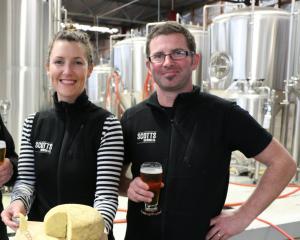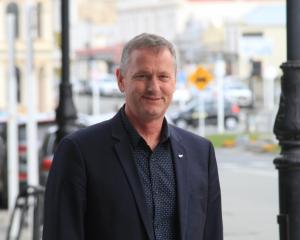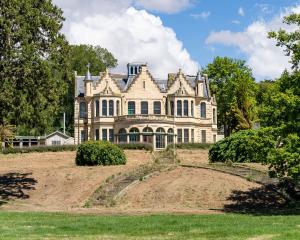
In her second stint studying penguins at Oamaru Harbour, Massey University master of science student Shelley Ogle (21), of Auckland, is at the Oamaru Blue Penguin Colony investigating how penguin chicks are affected by human interaction.
Returning to Oamaru this year had the added bonus of allowing her to see the installation of New Zealand's first penguin underpass, she said, which was designed to create a route for the birds whereby they would face less disturbance.
''I'm back because I quite enjoyed working with the penguins. It was a bonus coming back when they were building the culvert and getting to see something being done,'' Miss Ogle said.
''It's funny, with natural sciences, your lab usually is wildlife, outside. When you think of a lab you usually think of an indoors, stainless steel, sterile situation.''
Miss Ogle was one of four Massey master's students gathering data this spring on the birds that make their home in the recreation drawcard.
Last year, as a bachelor of science student, Miss Ogle completed two projects in Oamaru Harbour.
She tracked penguins' territorial behaviour, nest building, and courtship behaviour, before egg-laying, which for little blue penguins could be hard to predict and could occur anywhere between July and October.
Miss Ogle also watched - and timed - penguins leaving the water and getting to their nests, both within the colony and crossing the road at the Waterfront Rd boat ramp outside the colony, where the underpass has now been installed.
The difference in the time birds took leaving the water and walking to their nests inside the colony and at Waterfront Rd was ''huge'' despite travelling about the same 30m distance, she said.
''Inside the colony, they would spend five-odd minutes coming up, and at the boat ramp they would spend upwards of 40 minutes coming up. Some of them took 20 minutes, some of them took 15, but it was a lot longer.
''[It was] easily twice as long at the boat ramp.''
The $660,000 redevelopment under way at the colony - expected to be completed before the new year - was designed, in part, to accommodate future research, Oamaru Blue Penguin Colony marine biologist Philippa Agnew said.
Dr Agnew said Miss Ogle's work last year was useful: the Waterfront Rd crossing had already been identified as problematic and the culvert was already ''on the radar'' as an option, but Miss Ogle's work supported the need for a change in the area.
And for Dr Agnew, Miss Ogle and her fellow Massey students, represented a ''pretty exciting'' future for the colony.
The colony had already hosted bachelor's, honours and master's students from Massey, Waikato, and Otago universities, as well as researchers from Fordham University, in New York, and the University of Tokyo.
It also had collaborated with other institutions by sending samples abroad.
But the four Massey students represented the largest group of researchers the colony had hosted at one time, and the hope was more would follow.
Massey comparative endocrinology professor John Cockrem, who has collaborated with Dr Agnew since 2012, said the ease of access to the wild birds as well as the ''massive data base'' at the colony made research in Oamaru a ''unique opportunity''.
''This is the best place in New Zealand for any species of wild native animal of any shape or form to work with breeding success,'' he said.
''We're taking advantage of this wonderful opportunity.''












